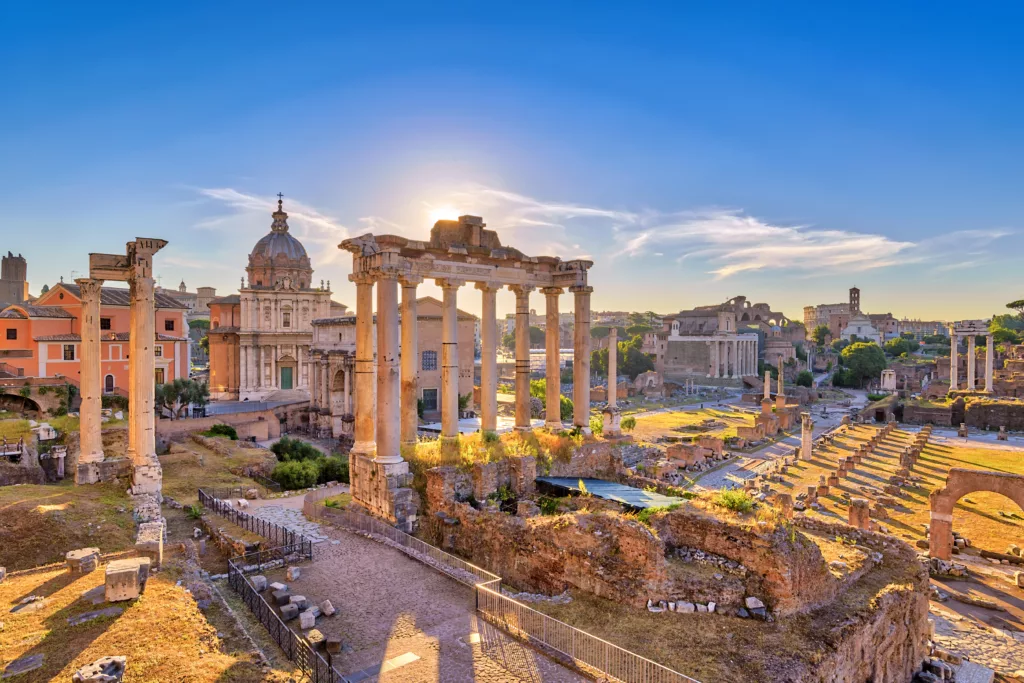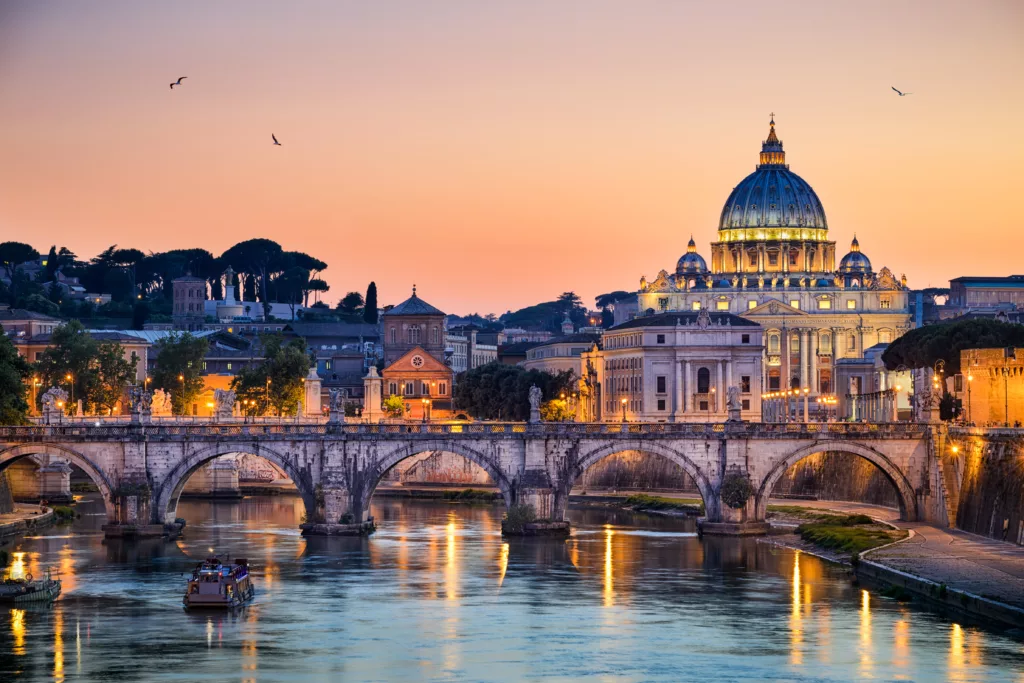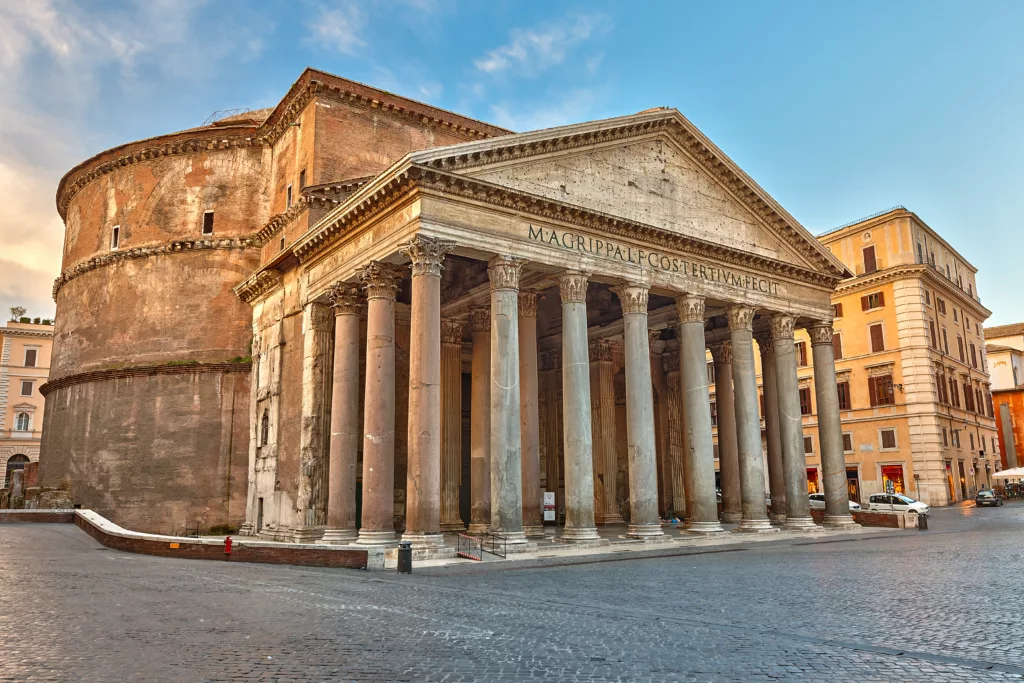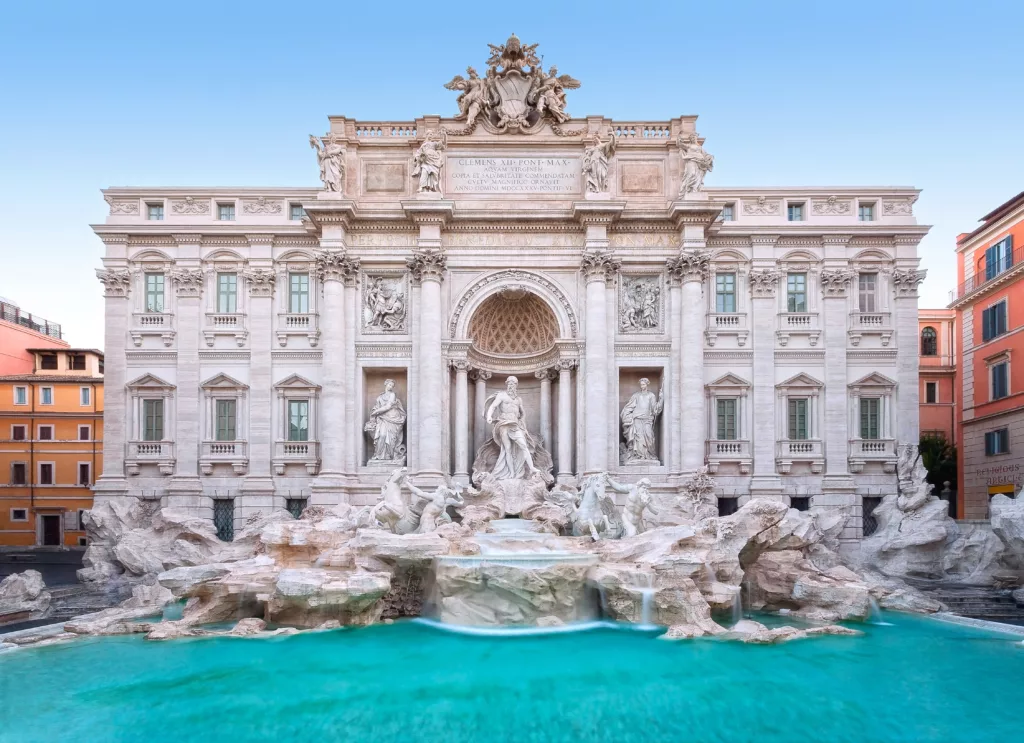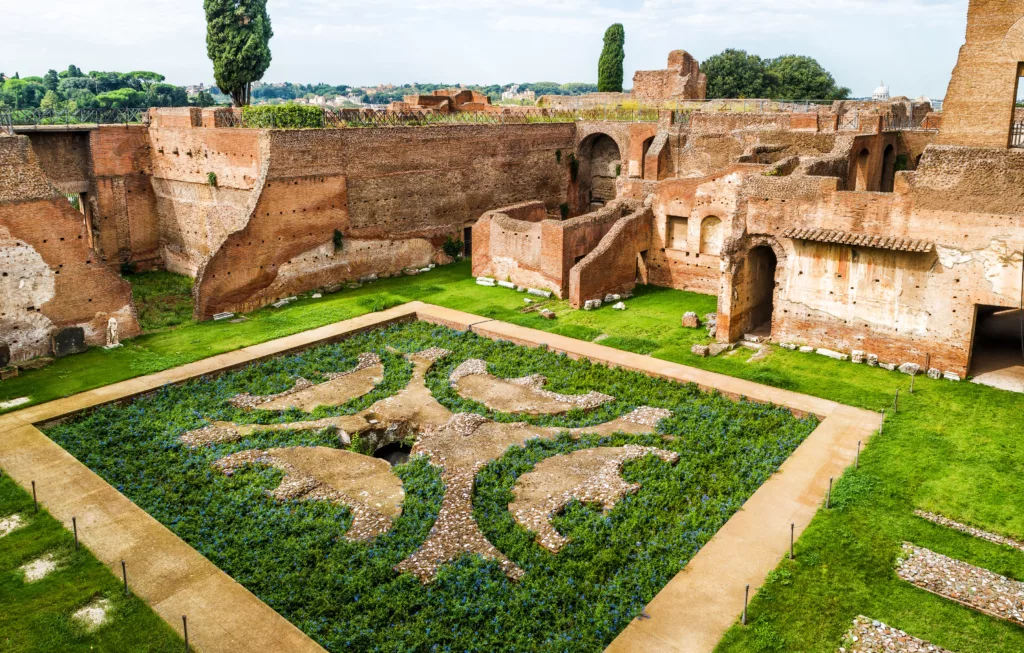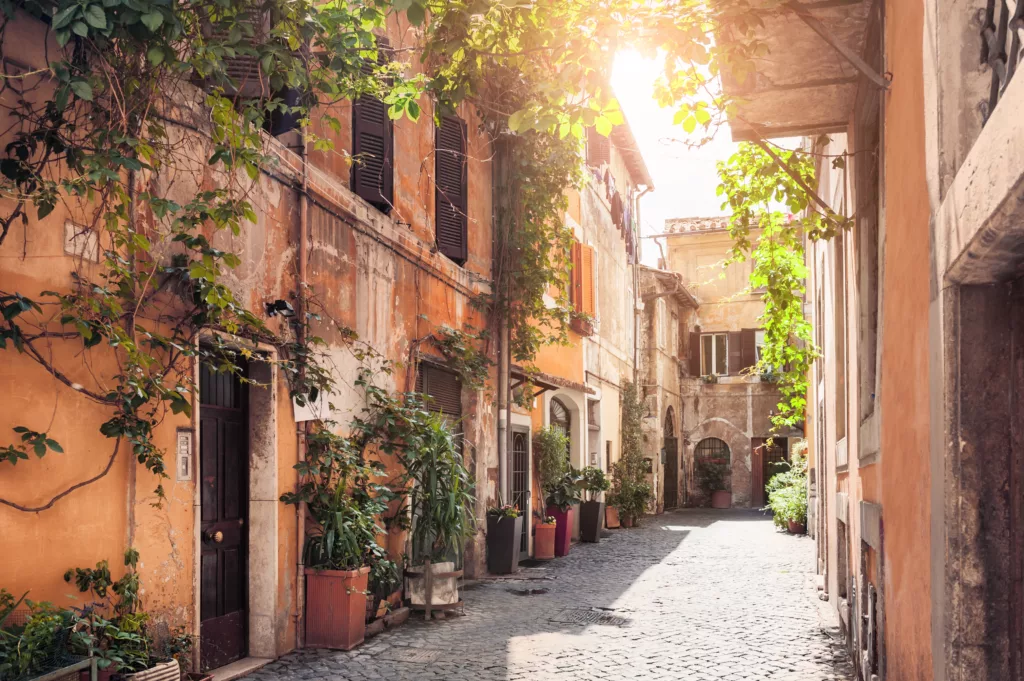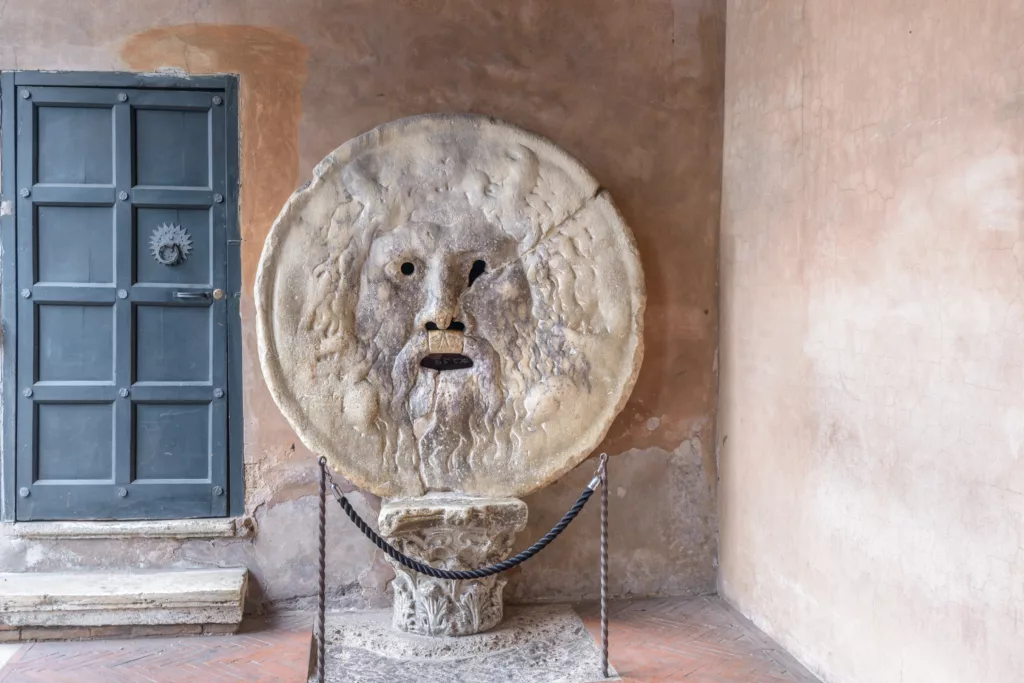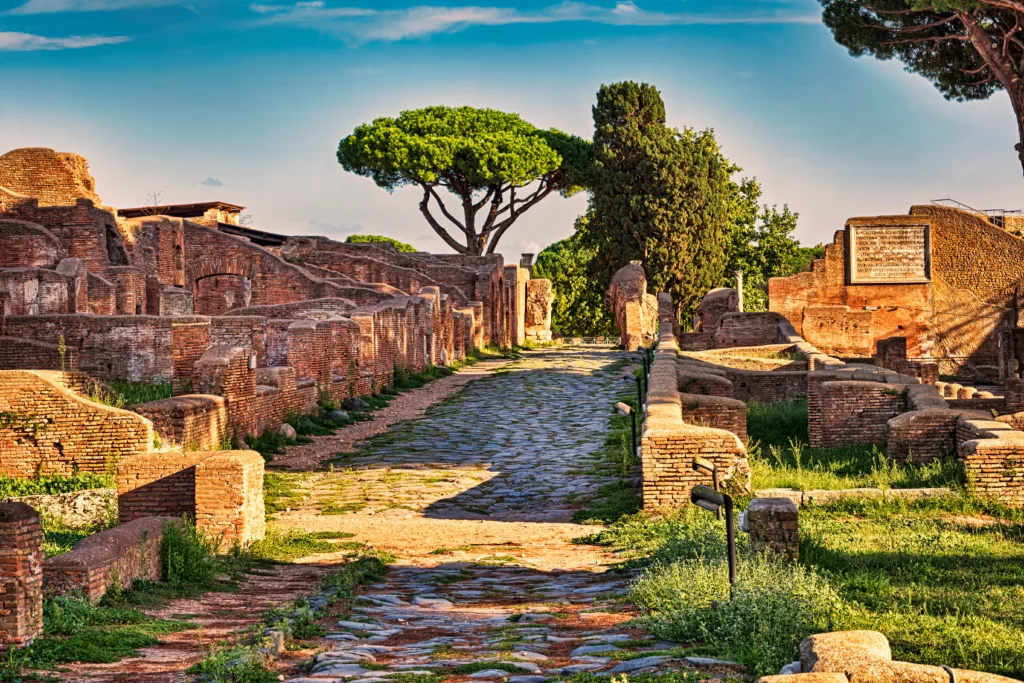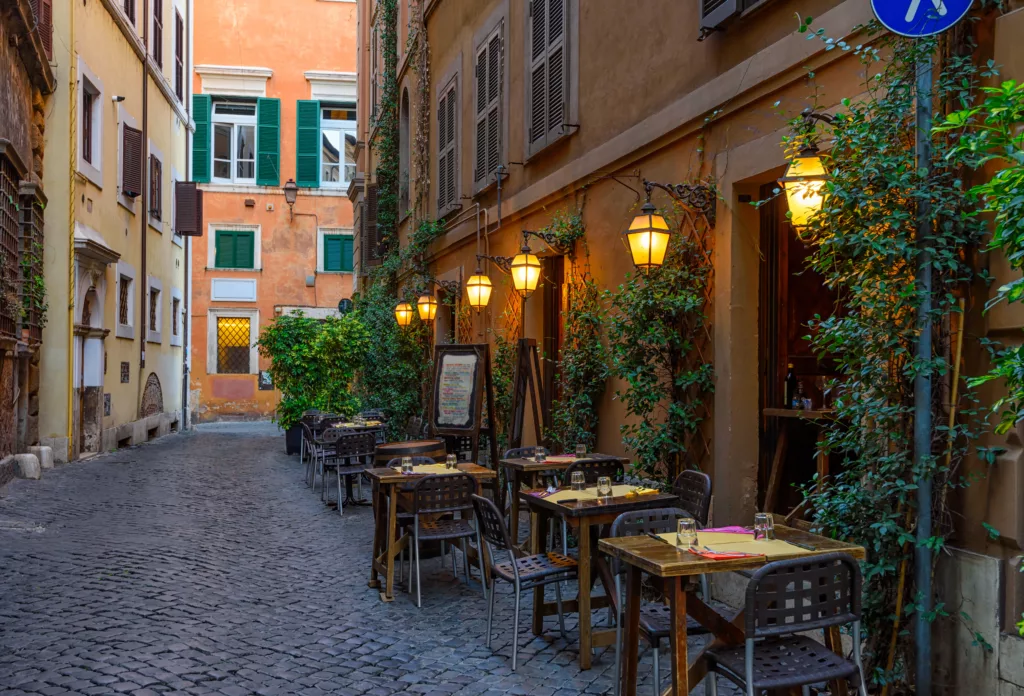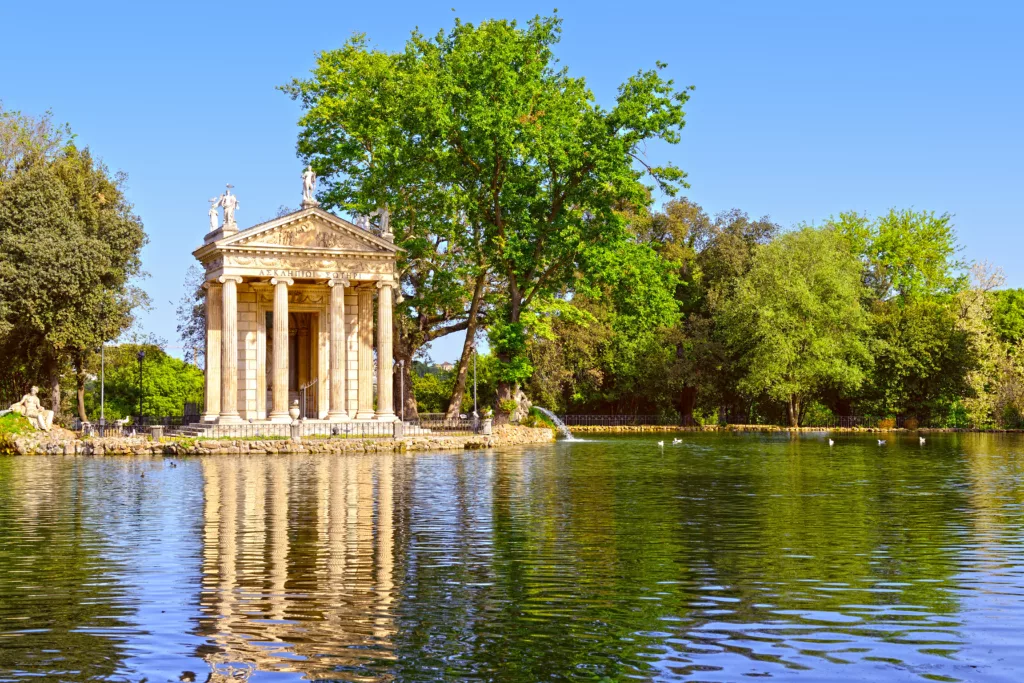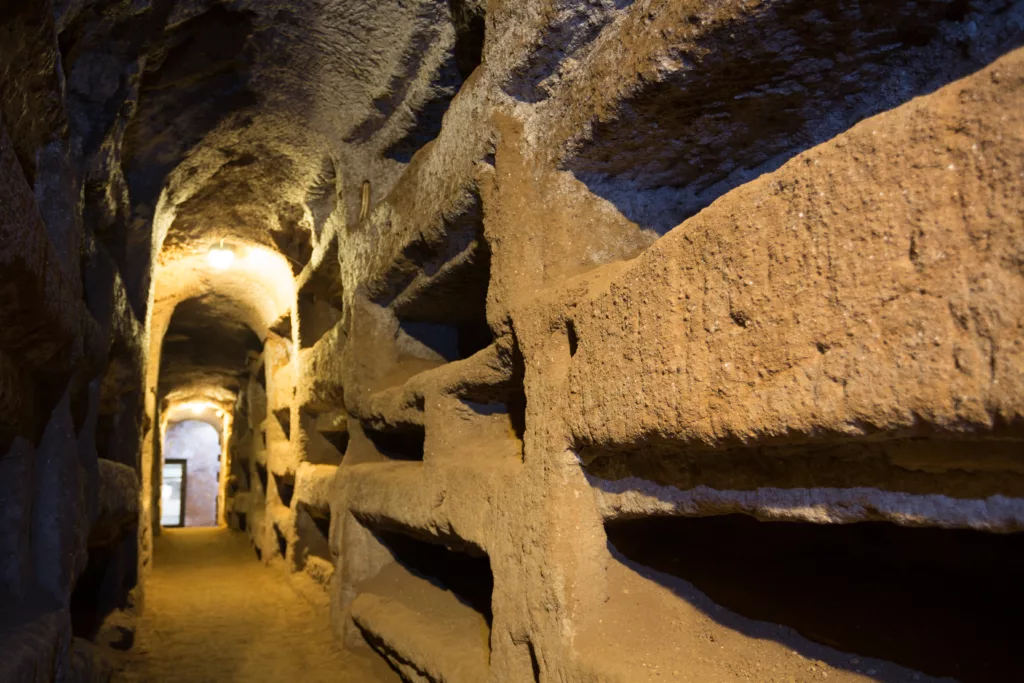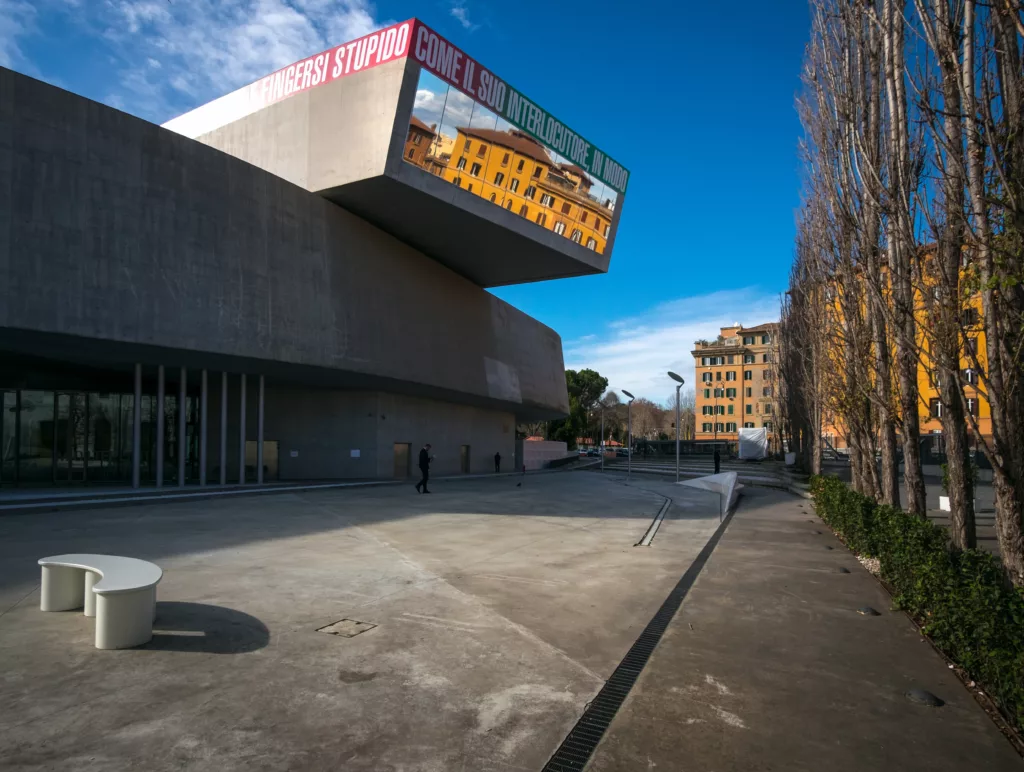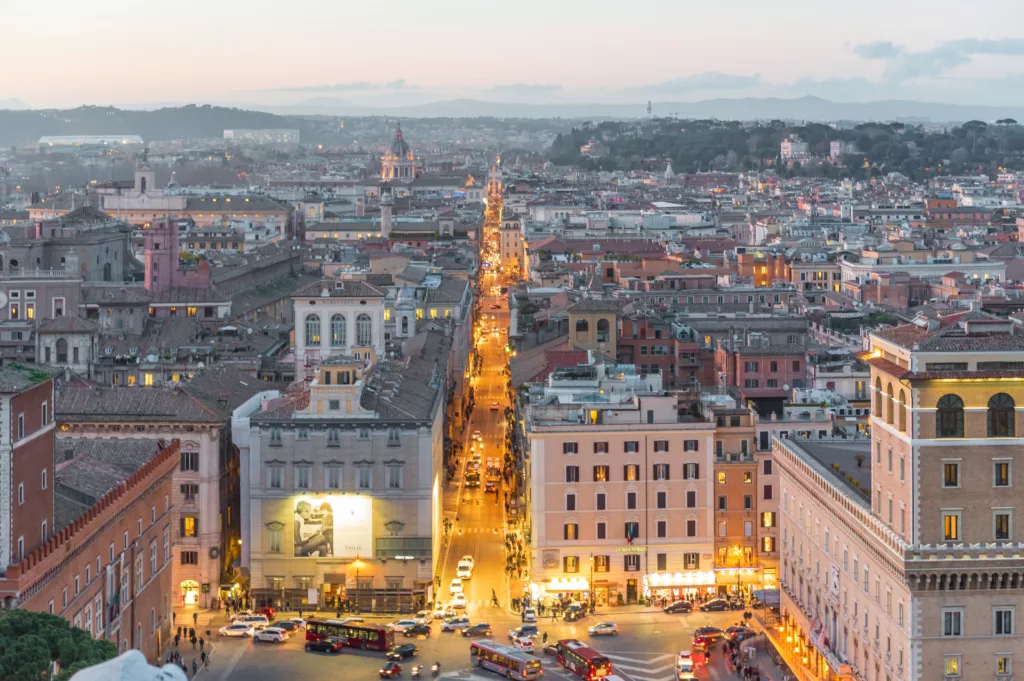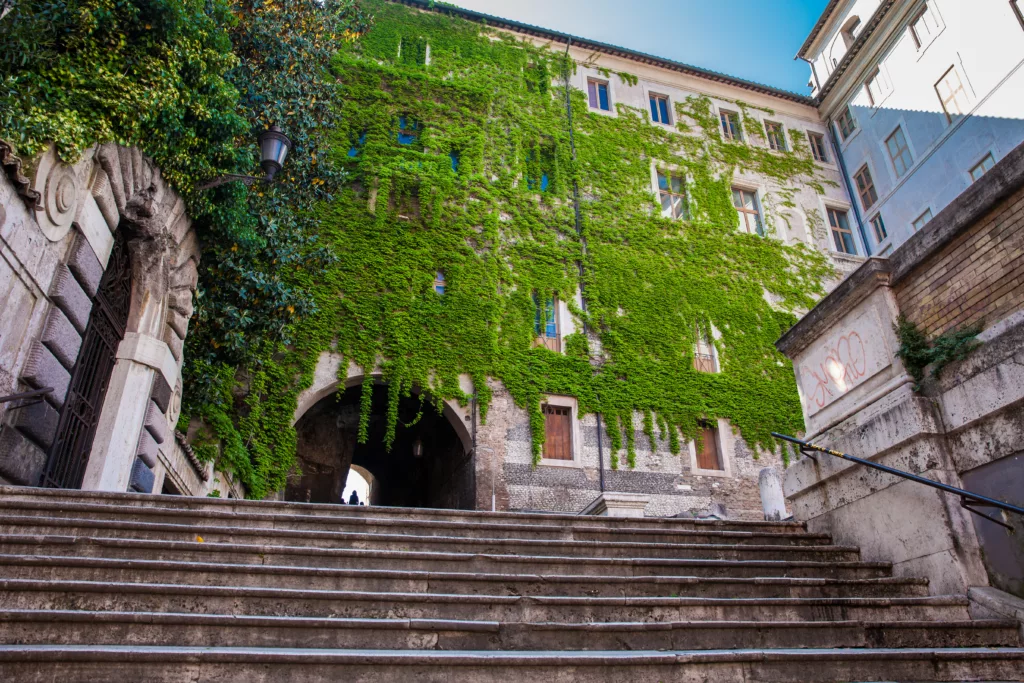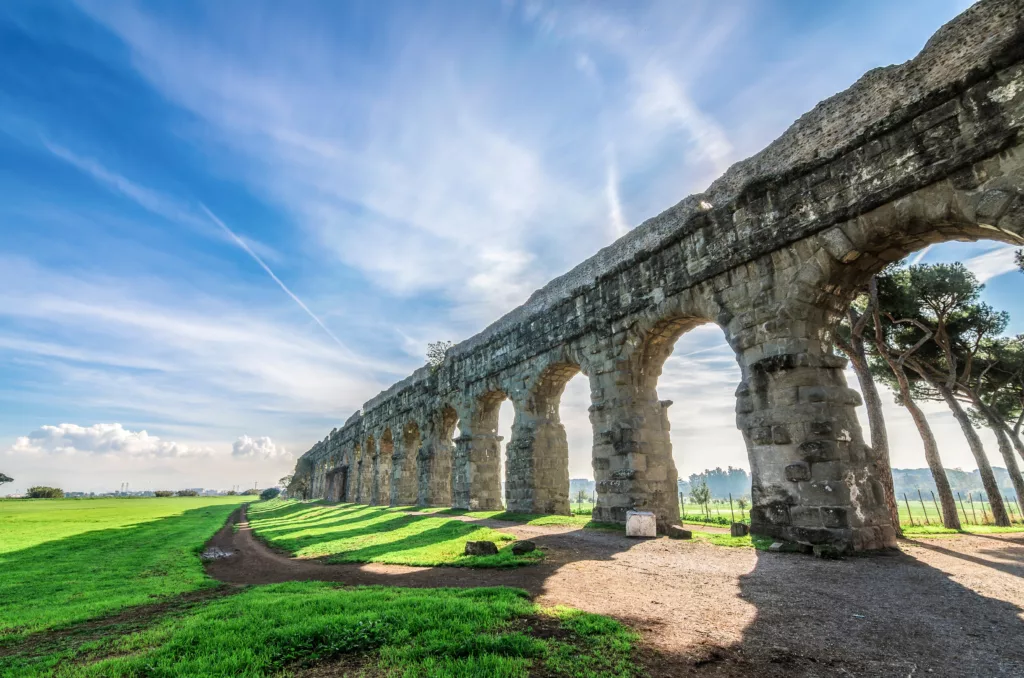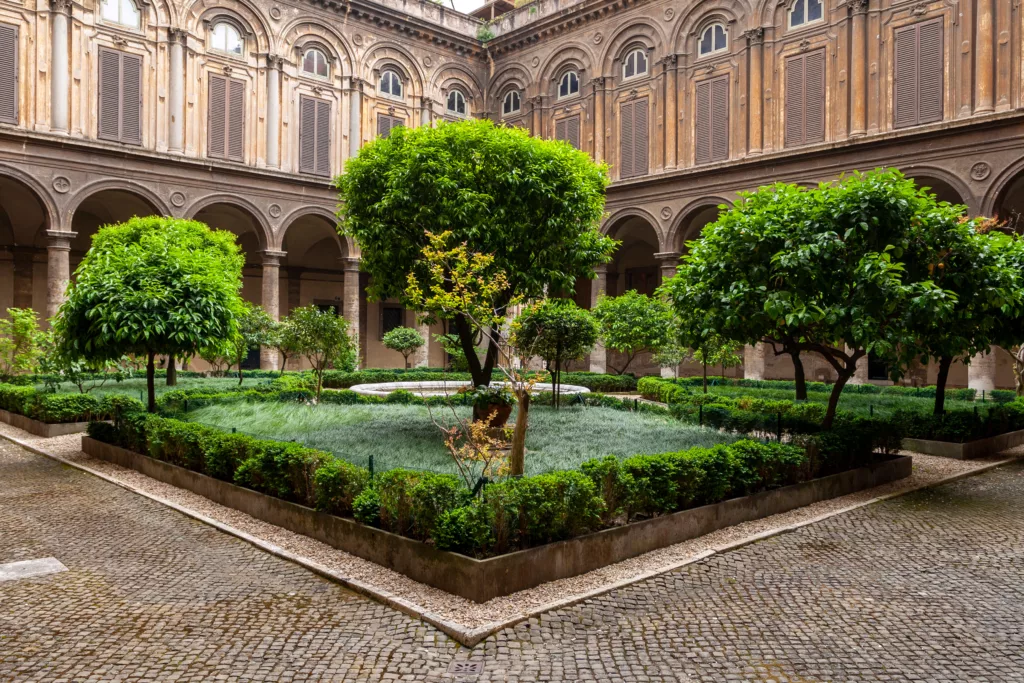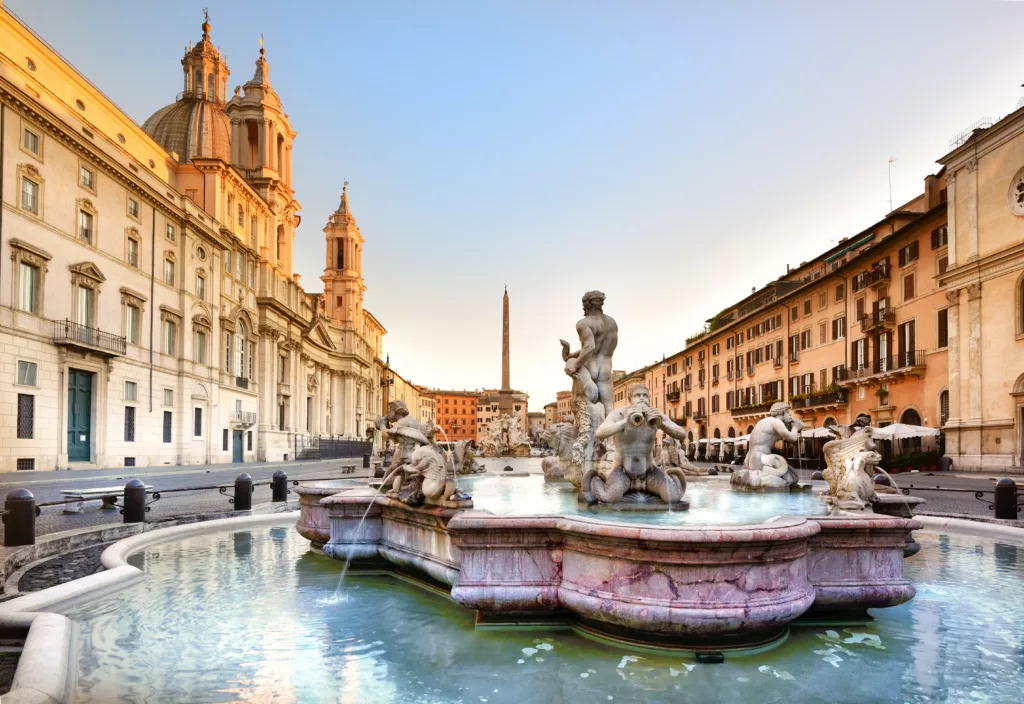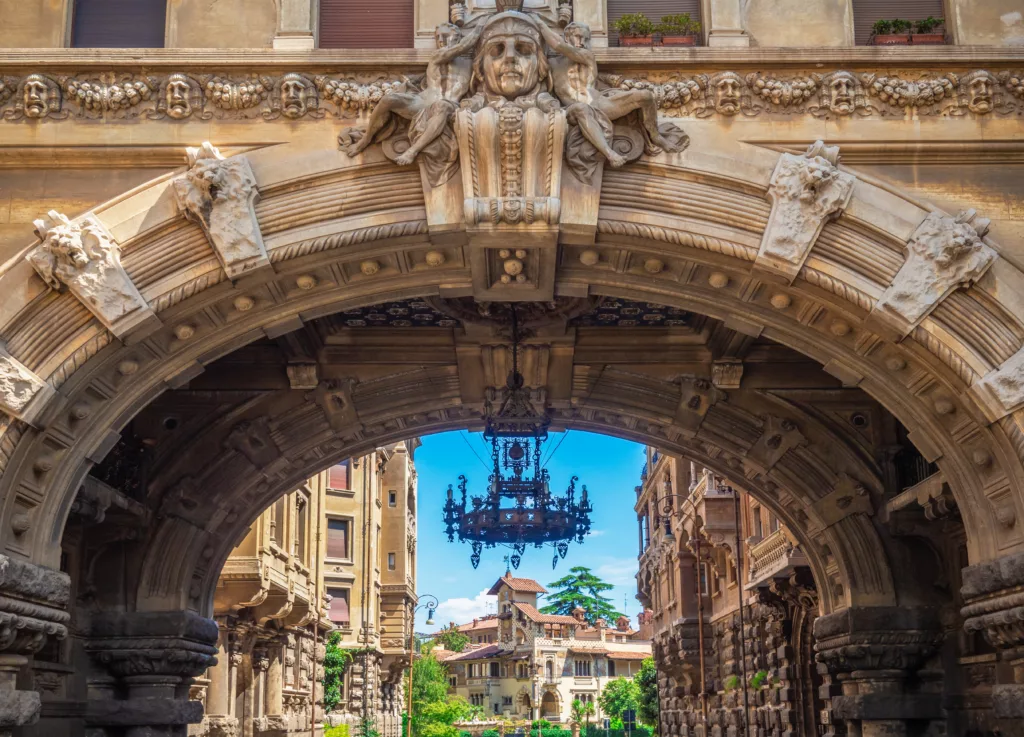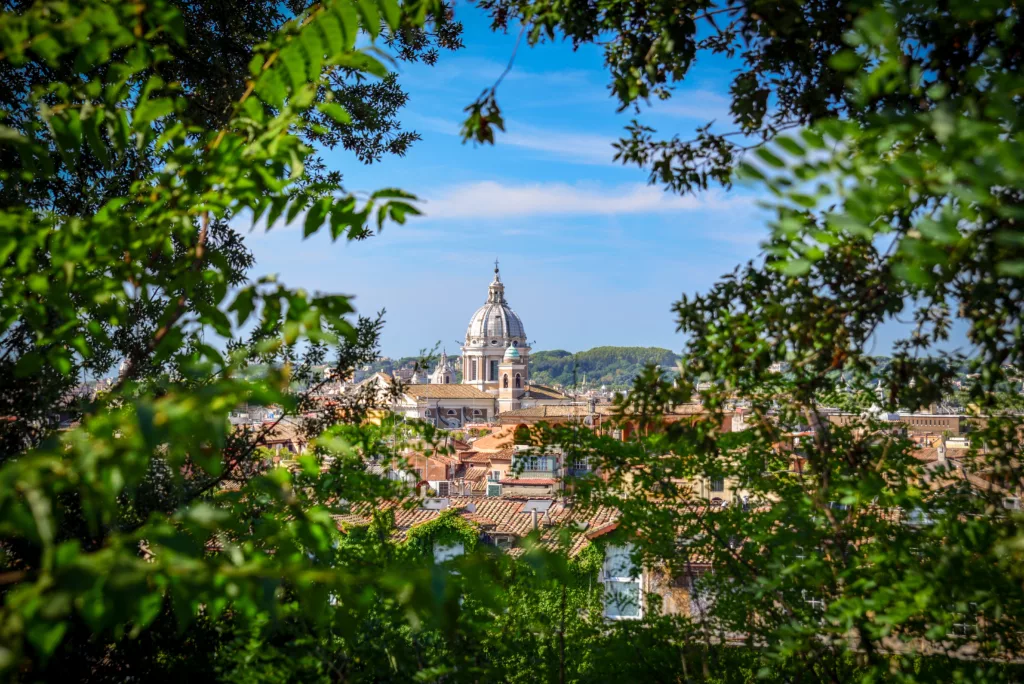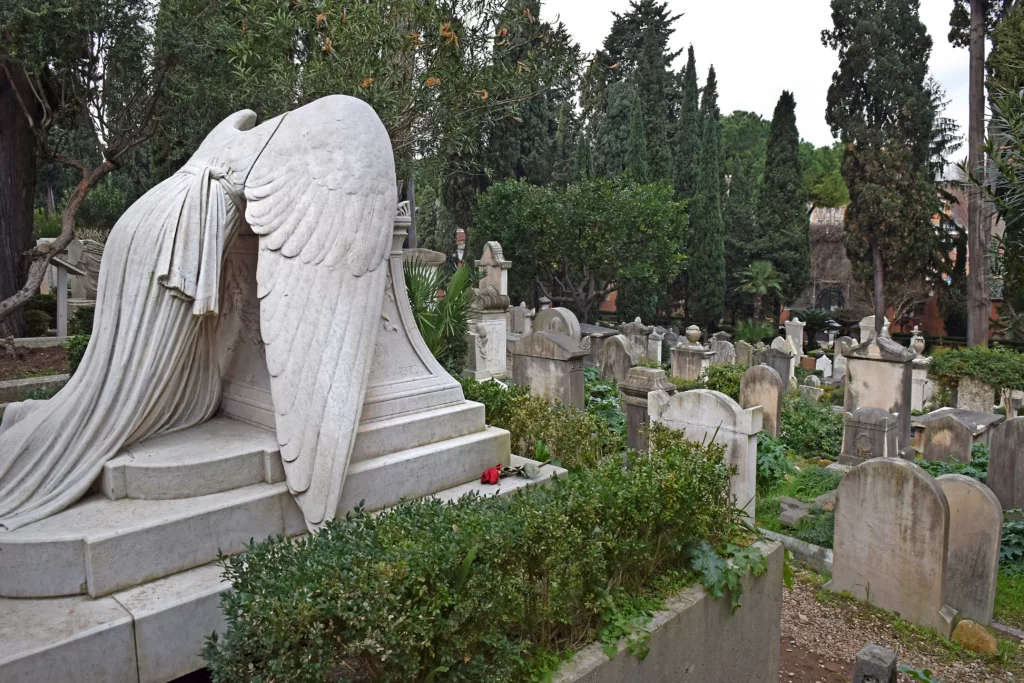Italy’s eternal city, Rome, is a spellbinding palette of historical grandeur, vibrant culture, and mouth-watering cuisine. With a history that spans over two millennia, Rome is a living testament to a glorious past that shaped much of the world as we know it today. Its streets are an enchanting labyrinth where the splendors of the ancient world blend seamlessly with the hustle and bustle of modern city life.
The city’s landmarks, steeped in legend and artistry, draw millions of visitors every year. From the mighty Colosseum, the grandeur of St. Peter’s Basilica, to the iconic Trevi Fountain, these timeless marvels need no introduction. Yet, what makes Rome genuinely captivating is the city’s ability to offer much more beyond these world-famous sights.
Delve deeper, and you’ll uncover a city that breathes through its bustling local markets, secret piazzas, and intimate trattorias. There’s a distinctive charm in Rome’s lesser-known experiences, waiting to be discovered beyond the well-trodden tourist trails. This article unveils 23 things to do in Rome that strike the perfect balance between the iconic and the hidden, offering a rich tapestry of experiences that promise an unforgettable Roman adventure.
1. Marvel at the Colosseum
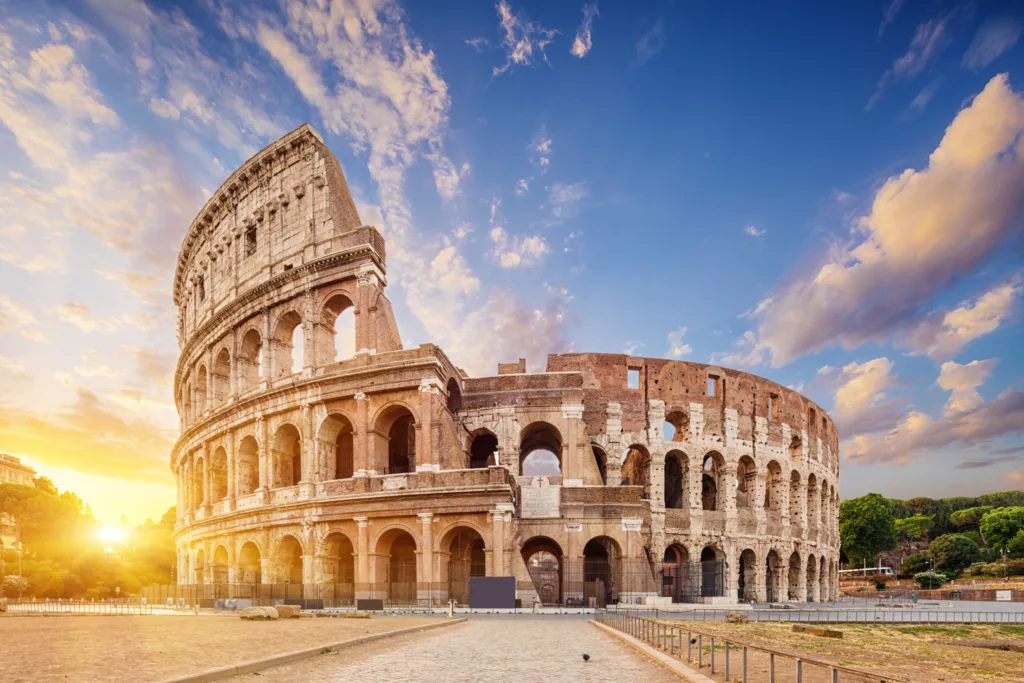
Start your Roman adventure with the iconic Colosseum, a testament to the city’s illustrious past and architectural prowess. Also known as the Flavian Amphitheatre, the Colosseum stands as a symbol of the Roman Empire’s engineering marvels and its intense love for entertainment.
Built between AD 72 and AD 80, the Colosseum was once the site of gladiatorial contests, public spectacles, and dramatic plays based on Classical mythology. It could accommodate around 50,000 spectators, making it the largest amphitheater ever built. Even today, its imposing presence in the heart of Rome reminds us of the city’s historical significance.
From its archaic ruins and underground chambers to the Emperor’s box, every corner of the Colosseum exudes an air of history and grandeur. Each stone has a story to tell, each echo from the past carries a tale of a civilization that shaped much of the world’s political, cultural, and social landscapes.
Despite its age, the Colosseum remains a magnificent sight to behold, particularly at sunrise or sunset when the soft light paints it with a golden hue. The surrounding area, teeming with bustling cafes and street performers, adds to the experience, making a visit to the Colosseum an absolute must when in Rome.
Voyagix Tips
To ensure an unforgettable visit to the Colosseum, we recommend the following tips:
- Getting There: The Colosseum is easily accessible via metro, with the Colosseo station located just nearby. For more detailed information, check the official Rome public transport website.
- Best Time to Visit: Early morning or late afternoon are generally less crowded. The Colosseum is also incredibly beautiful during these times due to the softer lighting.
- Tickets: To avoid long queues, consider buying a skip-the-line ticket online or getting a Roma Pass, which includes free entry to two out of five top attractions and discounts for many others.
- Tours: Joining a guided tour can enrich your experience as you’ll learn more about the history and architecture of the Colosseum.
There’s no better way to commence your Roman escapade than with a visit to the iconic Colosseum. Immersing yourself in its historical significance and architectural grandeur will set the tone for the rest of your Roman journey.
2. Explore the Roman Forum
Next, lose yourself in the Roman Forum, a sprawling ruin complex that once formed the heart of the Roman Empire. This archaeological site, nestled between the Palatine and Capitoline hills, stands as a testament to Rome’s ancient glory. As you step into the Forum, you’ll be walking on the very cobblestones that once echoed with the footsteps of Julius Caesar and other legendary figures of the past.
The Roman Forum was the hub of political, commercial, and judicial life in ancient Rome. It was here that triumphal processions took place, public speeches were delivered, and citizens came to cast their votes. Today, it’s an expansive field of ruins – arches, columns, and remnants of once-majestic buildings that give us a glimpse into the grandeur of ancient Rome.
While exploring the Forum, don’t miss out on key attractions such as the Temple of Saturn, the House of the Vestal Virgins, and the Arch of Titus. Each monument holds a fascinating story waiting to be discovered. Standing amid these age-old ruins, one can’t help but feel a connection to those who once walked these ancient paths.
The Roman Forum is more than just a collection of ruins; it’s a time portal to an era that laid the foundations of modern Western civilization. Take a leisurely stroll, soak up the atmosphere, and let your imagination bring the Forum back to life.
Voyagix Tips
To enhance your visit to the Roman Forum, consider these tips:
- Getting There: The Roman Forum is centrally located, just next to the Colosseum. You can take the metro to the Colosseo station. For more detailed information, check the official Rome public transport website.
- Tickets: Tickets to the Roman Forum are usually combined with those for the Colosseum and Palatine Hill, providing excellent value. Consider buying a skip-the-line ticket online or getting a Roma Pass.
- Best Time to Visit: Early morning or late afternoon are often less crowded and offer a more tranquil experience.
- Tours: Joining a guided tour can provide more insight into the Forum’s history and architecture.
Immerse yourself in the echoes of ancient Rome as you wander through the Roman Forum. This journey into the past is sure to be an enriching and memorable part of your Roman adventure.
3. Visit the Vatican City
Step into the Vatican City, an independent city-state enclaved within Rome and the spiritual and administrative headquarters of the Roman Catholic Church. Home to St. Peter’s Basilica, the Sistine Chapel, and the Vatican Museums, the Vatican City is a treasure trove of art, culture, and history.
Start your exploration with St. Peter’s Basilica, one of the world’s largest and most important Christian sites. Marvel at its astounding architectural details and opulent interior, which includes the magnificent Pieta by Michelangelo. And don’t miss the chance to climb to the top of the dome for a panoramic view of Rome’s cityscape.
Next, visit the Sistine Chapel, a masterpiece of Renaissance art. Look up and be awe-struck by the stunning ceiling frescoes by Michelangelo, including the iconic ‘Creation of Adam’ and ‘The Last Judgment’.
Finally, make your way to the Vatican Museums, home to an extensive collection of art and artifacts amassed by the popes over centuries. Each room is an exhibit in itself, filled with masterpieces from different eras and regions.
Exploring the Vatican City is a step into the spiritual, cultural, and historical heart of the Catholic Church. Its artistic richness and religious significance promise an enriching and unforgettable experience.
Voyagix Tips
To make the most of your visit to the Vatican City, consider these tips:
- Getting There: The Vatican is easily accessible by metro. Ottaviano-San Pietro station is a short walk from the Vatican. For more detailed information, check the official Rome public transport website.
- Tickets: Consider buying a skip-the-line ticket online for the Vatican Museums and St. Peter’s Basilica to avoid long queues.
- Best Time to Visit: The Vatican Museums and St. Peter’s Basilica can get crowded. It’s best to visit early in the morning or late afternoon.
- Dress Code: Remember to dress respectfully as the Vatican is a significant religious site. Cover your shoulders and knees.
- Tours: Joining a guided tour can provide deeper insight into the rich history and art of the Vatican City.
From the artistic splendor of the Sistine Chapel to the spiritual aura of St. Peter’s Basilica, the Vatican City is an absolute must-visit, enriching your Roman journey with its divine and artistic grandeur.
4. Admire the Pantheon
Don’t miss the Pantheon, a perfectly preserved temple that showcases the zenith of Roman engineering. This ancient architectural masterpiece stands in the heart of Rome, remarkable in its grandeur and symbolic of the city’s historical depth.
Built around 126 AD during the reign of Emperor Hadrian, the Pantheon was dedicated to all the gods of pagan Rome. Today, it stands as the best-preserved architectural monument from the Roman Empire, owing to its continuous use throughout history. Now a church, it still inspires with its ageless beauty and architectural sophistication.
Its striking facade, complete with Corinthian columns, gives way to an even more awe-inspiring interior. The Pantheon’s most notable feature is its dome, the largest unsupported concrete dome in the world, with a central opening or oculus that allows a single shaft of light to illuminate the interior.
Be sure to take your time admiring the interior details, including the beautifully patterned marble floor and the tomb of Renaissance artist Raphael. The Pantheon is not just a monument, but a living testament to Rome’s architectural prowess and enduring legacy.
Voyagix Tips
To maximize your visit to the Pantheon, consider these tips:
- Getting There: The Pantheon is located in Rome’s city center and is easily accessible on foot or by bus.
- Entrance: Entry to the Pantheon is free, but there are also guided tours available for those who wish to gain a deeper understanding of its history and architecture.
- Best Time to Visit: Visit early in the morning or later in the afternoon to avoid the crowds. Try to visit on a sunny day, when sunlight streaming through the oculus dramatically lights up the interior.
A visit to the Pantheon offers a remarkable journey through Rome’s history, architecture, and cultural legacy. This marvel of Roman engineering is sure to leave you captivated and give you a deeper appreciation of Rome’s rich heritage.
5. Throw a Coin into Trevi Fountain
Embrace the tradition at the Trevi Fountain, where a coin toss promises your return to this magical city. This Baroque masterpiece, tucked away in the heart of Rome, is more than just the city’s largest and most famous fountain. It’s a symbol of Rome’s rich history and romantic allure.
The Trevi Fountain is the end point of the ancient Roman aqueduct, the Aqua Virgo, and is a testament to Rome’s long-standing relationship with water. The fountain was completed in 1762 and is a stunning showcase of Baroque art with its intricate sculptures and detailed reliefs. At its center, Neptune, the god of the sea, rides a shell-shaped chariot pulled by seahorses, embodying the fountain’s theme of water in all its forms.
The tradition of throwing coins into the Trevi Fountain comes from a legend dating back to the ancient Romans. It is said that a thirst-quenching glass of water from the Trevi Fountain would ensure a swift return to Rome. Today, visitors from around the world follow the tradition by tossing a coin over their shoulder into the fountain, promising their return to the Eternal City.
Voyagix Tips
For an unforgettable visit to the Trevi Fountain, keep these tips in mind:
- Getting There: The Trevi Fountain is situated in Rome’s city center and is within walking distance of many other attractions.
- Best Time to Visit: Early morning or late evening visits are less crowded and offer a more serene experience. The fountain is lit up at night, making it a spectacular sight to behold.
- Coin Toss: Remember to toss the coin with your right hand over your left shoulder, following the traditional ritual.
- Respect: The Trevi Fountain is a historical monument, and it’s important to respect it. Swimming or wading in the fountain is strictly prohibited.
Visiting the Trevi Fountain, participating in its age-old tradition, and soaking in its artistic grandeur will be a memorable part of your Roman journey. It’s a captivating experience that connects you to the city’s rich past and romantic charm.
6. Climb Palatine Hill
Take in the sweeping views from the Palatine Hill, one of the seven hills on which ancient Rome was built. Standing 40 meters above the Roman Forum, the hill offers an unrivaled perspective of the city and a deeper connection to its past.
The Palatine Hill is steeped in legend and history. According to Roman mythology, it was on this hill that Romulus, the founder of Rome, was raised by a she-wolf. Over time, it became a desirable location for Rome’s rich and powerful. Today, it’s home to the ruins of grand palaces, including the House of Augustus and the Flavian Palace.
As you explore the hill, you’ll traverse layers of history, walking through ancient ruins, lush gardens, and impressive archaeological sites. The views over the Circus Maximus and the Colosseum are particularly breathtaking. Be sure to visit the Palatine Museum to see a collection of artifacts unearthed from the area.
With its captivating blend of myth, history, and natural beauty, the Palatine Hill provides an enriching and visually stunning experience.
Voyagix Tips
Make the most of your visit to the Palatine Hill with these tips:
- Getting There: Palatine Hill is adjacent to the Colosseum and Roman Forum, making it easily accessible on foot.
- Tickets: A combined ticket can be purchased that includes the Palatine Hill, the Colosseum, and the Roman Forum. It’s recommended to buy tickets online in advance to avoid long queues.
- Best Time to Visit: Early morning or late afternoon offer cooler temperatures and less crowded conditions, providing a more enjoyable experience.
- Tours: Consider taking a guided tour to better understand the historical significance of the site.
A visit to the Palatine Hill is a walk through Rome’s history and a chance to see the city from a new perspective. The stunning views, the intriguing ruins, and the connection to Rome’s ancient past make the Palatine Hill a must-see on your Roman adventure.
7. Stroll through Trastevere
Discover the charming Trastevere neighborhood, with its labyrinthine streets, lively piazzas, and vibrant nightlife. This enchanting Roman neighborhood, whose name translates to “across the Tiber,” captures the heart of Rome’s unique spirit.
As you stroll through Trastevere’s narrow cobblestone streets, you’ll encounter an intoxicating mix of history and local culture. The neighborhood is filled with picturesque houses adorned with climbing ivy, small boutiques, art studios, traditional bakeries, and authentic Roman trattorias. Every corner reveals a new surprise, making Trastevere a living postcard of Rome’s charm.
Trastevere’s lively piazzas, like Piazza di Santa Maria and Piazza Trilussa, are central to community life. They serve as a stage for local musicians and artists, and a gathering spot for both locals and visitors. Here, under the Italian sun or starry sky, you can enjoy an espresso or aperitivo, soak up the local atmosphere, and even make new friends.
As dusk settles, Trastevere transforms into one of Rome’s most vibrant nightlife scenes. Bars and restaurants buzz with energy, making it a perfect place to experience the local cuisine and enjoy a night out in Rome.
Voyagix Tips
To make the most of your Trastevere experience, consider these tips:
- Explore by Foot: The best way to discover Trastevere’s charm is by walking. Lose yourself in its maze-like streets and discover hidden gems at every turn.
- Try the Local Cuisine: Trastevere is known for its authentic Roman cuisine. Try local specialties like Carbonara or Amatriciana in one of the many local trattorias. A great place to start is Da Enzo al 29, known for its traditional dishes.
- Visit the Basilica: The Basilica of Santa Maria in Trastevere is one of Rome’s oldest churches and is a must-visit, with its stunning mosaics and rich history.
Trastevere, with its compelling mix of history, culture, and nightlife, offers an authentic slice of Roman life. This neighborhood invites you to embrace the Roman spirit of ‘la dolce vita’ and create memories that will last a lifetime.
8. Visit the Capuchin Crypt
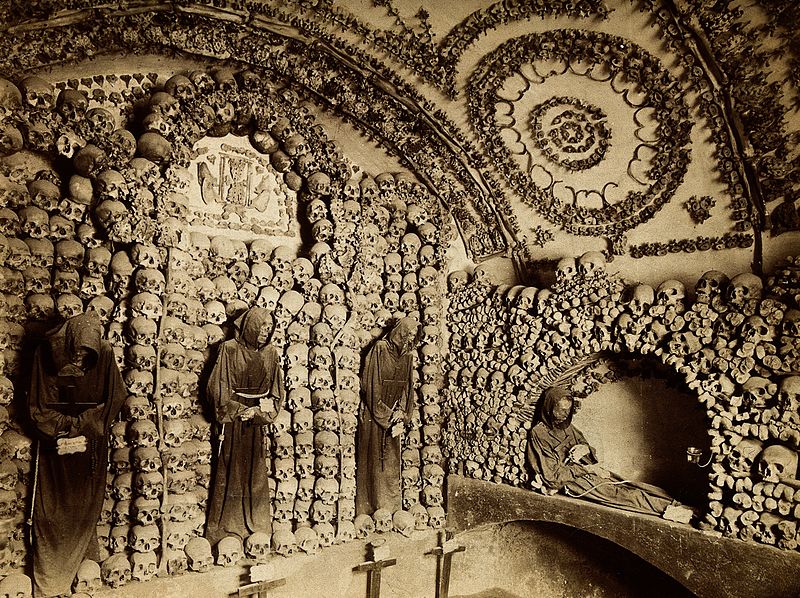
Step off the beaten path and explore the hauntingly beautiful Capuchin Crypt, decorated with the bones of Capuchin friars. Hidden beneath the Church of Santa Maria della Concezione dei Cappuccini, this unique site presents a striking blend of art, religion, and mortality.
The Capuchin Crypt is composed of several small chapels, each intricately decorated with the skeletal remains of about 4,000 friars. The bones, arranged in intricate patterns and designs, serve as memento mori – reminders of human mortality and the transient nature of life. Despite its macabre decor, the crypt is not meant to be a place of fear, but a silent message from the friars about life’s fleeting beauty.
Beyond its chilling aesthetics, the Capuchin Crypt is a place of profound reflection and spirituality. Visitors often find themselves contemplating life, death, and eternity in this unique and solemn space. Nearby, the Capuchin museum provides context and insight into the lives of the Capuchin friars and their spiritual philosophy.
Voyagix Tips
When planning a visit to the Capuchin Crypt, these tips might come in handy:
- Respect the Space: The Capuchin Crypt is a religious site, and visitors should maintain a respectful silence during their visit. It’s important to remember that the bones are the earthly remains of friars who once served their community.
- Visit the Museum: Don’t miss the Capuchin museum, which offers additional insights into the crypt and the Capuchin order. You can explore exhibits of historical and religious significance.
- Advance Booking: To avoid lines, consider booking your tickets in advance. This also provides you with the option of an audio guide, which gives you a deeper understanding of the crypt’s symbolism.
While the Capuchin Crypt might not be the typical tourist destination, it’s a unique and reflective experience that invites you to ponder the transient nature of life. It’s an unforgettable part of Rome’s history and spirituality that leaves a lasting impression.
9. Experience the Mouth of Truth
Dare to put your hand in the Mouth of Truth (Bocca della Verità), an ancient Roman drain cover that’s become a curious local legend. This massive marble mask, which dates back to the 1st century AD, is said to bite off the hands of those who lie.
The Mouth of Truth is carved with a face that is open in a provocative expression. Traditionally believed to represent a river god, it was likely originally used as a drain cover in the nearby Temple of Hercules Victor. Over centuries, the mask has morphed from a practical object into a fascinating cultural artifact imbued with tales and superstitions.
The legend of the Mouth of Truth reached a global audience with the classic movie “Roman Holiday,” where Audrey Hepburn and Gregory Peck tested their honesty with the mask. Since then, visitors from around the world have lined up to place their hand in its gaping mouth and playfully test their own truthfulness.
Located in the portico of the church of Santa Maria in Cosmedin, the Mouth of Truth provides an intriguing glimpse into the cultural and historical quirks that make Rome such a captivating city.
Voyagix Tips
To make the most out of your Mouth of Truth experience, consider the following tips:
- Prepare for a Queue: The Mouth of Truth is a popular spot, so be prepared for a wait. Its legend and cinematic fame often attract crowds.
- Photographs: It’s customary to have your photo taken while placing your hand in the mouth. Make sure your camera or phone is ready for this unique photo opportunity.
- Explore the Surroundings: Don’t forget to visit the Church of Santa Maria in Cosmedin, home to the relic of St. Valentine. Nearby, you can also explore the Roman Forum Boarium, an ancient cattle market.
A visit to the Mouth of Truth is more than a daring test of honesty—it’s a step into a piece of Rome’s fascinating cultural tapestry. It’s an unforgettable experience that adds a touch of mystery and fun to your Roman adventure.
10. Visit Ostia Antica
Step back in time at Ostia Antica, Rome’s ancient port and a lesser-known archaeological site that rivals Pompeii. Once a bustling seaport at the mouth of the Tiber River, Ostia Antica is now a fascinating open-air museum.
As you explore the site, you’ll walk on millennia-old streets, entering shops, bathhouses, and apartment buildings that were once vibrant centers of Roman life. The well-preserved mosaics, frescoes, and sculptures offer vivid glimpses into ancient Rome, making Ostia Antica an archaeologist’s dream.
One of Ostia Antica’s highlights is the ancient theatre, which once hosted plays and concerts for up to 3,000 spectators. Its backdrop, the Square of the Guilds, was the economic heart of the city, with intricate mosaics representing the various trades of ancient Ostia.
Despite its historical significance, Ostia Antica sees far fewer visitors than Pompeii, allowing for a more tranquil exploration of ancient Rome. It’s a treasure trove of history just a short trip from the city center.
Voyagix Tips
When planning your visit to Ostia Antica, consider these tips:
- Plan Your Visit: Ostia Antica is a large site, and a visit can easily take up a half or full day. Plan your visit accordingly and wear comfortable shoes.
- Guided Tours: A guided tour can help bring the ruins to life. If you prefer to explore independently, consider getting a guidebook or an audio guide from the official site.
- Don’t Miss: Make sure to visit the Baths of Neptune, known for its stunning black-and-white mosaics, and the House of Cupid and Psyche, with its beautiful frescoes.
Ostia Antica is an extraordinary window into the past, offering a unique opportunity to walk through ancient streets and touch history. It’s a must-visit for history buffs and anyone seeking to delve deeper into Rome’s rich heritage.
11. Relish Roman Cuisine in Testaccio
Head to Testaccio to sample traditional Roman cuisine in its local markets and family-run trattorias. Known as Rome’s original foodie neighborhood, Testaccio is a melting pot of flavors, aromas, and Roman culinary traditions.
Testaccio’s heart is its vibrant food market, where local producers sell everything from fresh fruits and vegetables to cheese, meat, and baked goods. Wander through the bustling stalls, chat with the friendly vendors, and savor the rich array of products. The food market is also home to several food stands, offering delicious street food and local dishes.
Family-run trattorias dot the neighborhood, serving hearty Roman dishes that have been passed down through generations. It’s here that you can savor classics like cacio e pepe, amatriciana, and the quintessential Roman dish, trippa alla Romana.
But Testaccio’s gastronomic appeal extends beyond its food. The neighborhood is steeped in culinary history, from the ancient Roman food warehouses to the former slaughterhouse turned culinary school. It’s a place where food tells stories of Rome’s past and present.
Voyagix Tips
Here are some tips to make your culinary journey in Testaccio more enjoyable:
- Explore the Market: Don’t miss the Testaccio Market, a lively and colorful place where you can taste a wide variety of local produce and street food.
- Try the Local Delicacies: Testaccio is known for its offal dishes, a legacy from its days as a slaughterhouse district. If you’re feeling adventurous, try the pajata or the trippa alla Romana.
- Food Tours: Consider joining a food tour to dive deeper into Testaccio’s culinary scene. Guided by local food lovers, you’ll learn about the neighborhood’s food history while sampling a variety of dishes.
Testaccio offers a rich and authentic taste of Roman cuisine. Whether you’re a foodie or a curious traveler, this neighborhood is a culinary adventure that tantalizes the taste buds and feeds the soul.
12. Picnic at Villa Borghese
Escape the city’s bustle and enjoy a leisurely picnic at the verdant Villa Borghese park. This peaceful oasis in the heart of Rome is the city’s third-largest public park and offers a perfect setting for a serene picnic amidst greenery and art.
Villa Borghese is more than just a park; it’s a landscape garden filled with buildings, museums, fountains, lakes, and monuments. It offers a soothing respite from the noise and pace of the city, inviting you to relax in its beautiful setting. The landscape is dominated by English-style gardens, large shady trees, colorful flowerbeds, and tranquil ponds.
You can spend hours exploring Villa Borghese. Visit the Borghese Gallery, housing an impressive collection of art, including works by Bernini, Caravaggio, and Raphael. Rent a boat and paddle in the lake near the Temple of Asclepius, or simply stroll along the garden paths, enjoying the beauty and tranquility.
For your picnic, find a spot under a tree or by one of the many fountains and immerse yourself in the peaceful atmosphere. Pack your favorite Italian delicacies, or purchase from one of the onsite vendors, and relish your meal amidst the park’s stunning scenery.
Voyagix Tips
When planning your picnic at Villa Borghese, consider these tips:
- Check the Weather: A picnic is best enjoyed on a sunny day. Check the weather forecast in advance.
- Arrive Early: To get the best spots, consider arriving early, especially on weekends when the park can get crowded.
- Visit the Museums: Don’t miss the opportunity to visit the Borghese Gallery and the other museums in the park. Remember to book tickets in advance.
A picnic at Villa Borghese is a delightful way to experience Rome’s slower pace and appreciate its natural and artistic beauty. It’s a little slice of tranquility in the heart of a bustling city.
13. Discover Rome’s Catacombs
Plunge beneath the city’s surface to explore the eerie yet fascinating network of the ancient Roman Catacombs. These underground burial sites provide a unique perspective into early Christianity in Rome and are a testament to the city’s layered history.
Rome’s catacombs were built from the 2nd to the 5th century AD, with miles of subterranean passageways lined with tombs. As you navigate the narrow corridors, you’ll see niches cut into the walls, which once held the remains of Rome’s early Christians, Jews, and pagans.
Many catacombs feature ancient wall paintings, intricate carvings, and stunning mosaics that shed light on the rituals, beliefs, and daily lives of Rome’s earliest inhabitants. Among them, the Catacombs of St. Callixtus are perhaps the most famous, housing the Crypt of the Popes.
The catacombs’ cool, dark tunnels and their rich, ancient history create a haunting atmosphere that’s unlike anything else in Rome. A guided tour of these sacred spaces offers a fascinating journey back in time, revealing a lesser-known side of the Eternal City.
Voyagix Tips
When planning your visit to the catacombs, consider the following tips:
- Choose Your Catacombs: Rome has several catacombs open to the public. Besides the Catacombs of St. Callixtus, the Catacombs of Priscilla and the Catacombs of St. Sebastian are also worth a visit.
- Join a Guided Tour: Catacombs can only be visited on a guided tour. Booking in advance is recommended, especially in peak season.
- Dress Appropriately: The catacombs are religious sites, and appropriate clothing (covered shoulders and knees) is required.
Exploring the Roman Catacombs is an enthralling experience, revealing an underground world of history and spirituality. It’s an unmissable part of your Roman journey, offering a deep dive into the city’s ancient past.
14. Visit the MAXXI Museum
For contemporary art and architecture enthusiasts, the MAXXI Museum is a must-visit. Located in the Flaminio neighborhood of Rome, the National Museum of 21st Century Arts (MAXXI) is Italy’s first national museum dedicated to contemporary creativity.
Designed by the renowned architect Zaha Hadid, MAXXI itself is a work of art. Its innovative and complex design features flowing lines, dynamic shapes, and abundant natural light. The structure is a testament to modern architecture, providing a fitting backdrop to the contemporary works it houses.
The museum hosts a wide array of art, including installations, paintings, sculptures, and digital art from international artists. Its collections are divided into two sections: MAXXI Art and MAXXI Architecture, each hosting rotating exhibitions and cultural events. These works challenge traditional artistic concepts and push the boundaries of contemporary creativity.
Walking through the museum, you’ll be drawn into thought-provoking dialogues with the art and architecture of the 21st century. The museum’s vibrant, innovative environment stimulates a dynamic interaction between the artworks, the audience, and the building.
Voyagix Tips
Here are some tips to enhance your visit to the MAXXI Museum:
- Plan Ahead: Check the museum’s official website in advance to know about the current and upcoming exhibitions.
- Guided Tours: Consider joining a guided tour to gain a deeper understanding of the exhibited artworks and the architectural design of the museum.
- Allow Time: The museum is extensive, so allow at least a few hours to fully experience the exhibits.
A visit to the MAXXI Museum offers a unique opportunity to engage with contemporary creativity in a striking architectural setting. Whether you’re an art enthusiast or just a curious traveler, this museum is a vibrant part of Rome’s cultural scene that’s not to be missed.
15. Shop at Via del Corso
Indulge in some retail therapy at Rome’s premier shopping street, the Via del Corso. This bustling thoroughfare stretches from Piazza Venezia to Piazza del Popolo and is a paradise for shopaholics, brimming with a plethora of stores to satisfy all tastes and budgets.
Via del Corso is flanked by a mix of high-street brands, luxury boutiques, local artisan shops, and well-known Italian labels. Whether you’re searching for the latest in Italian fashion, unique souvenirs, or handcrafted leather goods, you’re sure to find it along this vibrant street. Shop for clothes, accessories, and shoes from international brands, or explore Italian fashion houses for a touch of local style.
But shopping is not the only attraction on Via del Corso. This historic street is lined with beautiful architecture, palaces, and monuments. Take a break from shopping to visit some of these sites, like the Piazza del Popolo and the stunning twin churches at its northern end.
After a day of shopping, relax at one of the street’s charming cafés and gelaterias, watching the world go by as you savor some of the city’s culinary delights.
Voyagix Tips
Here are some tips for your shopping adventure on Via del Corso:
- Plan Your Route: The street is almost 1.5 kilometers long with numerous side streets and alleyways leading to other shopping areas. Check out a map to plan your route.
- Shopping Hours: Most shops open around 9:30 AM and close at 7:30 PM, with a break between 1:00 PM and 3:30 PM. Sunday hours may vary.
- Be Aware of Pickpockets: Like any popular tourist area, keep an eye on your belongings.
Whether you’re a seasoned shopper or a casual browser, the Via del Corso offers an unforgettable Roman shopping experience, blending retail, history, and gastronomy into one grand avenue.
16. Visit the Monti Neighborhood
Wander through Monti, Rome’s first ward, and now a trendy and bohemian district that beautifully merges the old with the new. Nested between the Colosseum and Via Nazionale, this neighborhood is known for its enchanting streets, eclectic mix of boutiques, and vibrant nightlife.
With its narrow cobbled streets and hidden corners, Monti is a district that invites exploration. It’s rich in history, boasting a range of architectural styles from the Renaissance buildings to medieval churches. At the heart of the neighborhood, the Piazza della Madonna dei Monti serves as a gathering point for locals and visitors alike, perfect for people-watching and enjoying a gelato.
Monti is also a hub for artisan workshops and independent boutiques, offering everything from vintage clothes to handmade jewelry. Art lovers can browse numerous galleries showcasing contemporary works and antiquarian shops filled with historical treasures.
As evening falls, Monti reveals its vibrant side. The district is renowned for its eclectic mix of wine bars, hip restaurants, and live music venues. Whether you’re looking for a quiet enoteca to sample Italian wines or a lively spot for a night out, Monti has something to suit every taste.
Voyagix Tips
When visiting Monti, consider these tips:
- Explore the Backstreets: Go beyond the main streets to discover hidden gems, such as small artisan workshops and local eateries.
- Visit Mercato Monti: This urban market is a great place to find unique clothing, accessories, and art. Check their website for opening times.
- Try the Local Cuisine: Monti is home to some excellent trattorias and pizzerias. Don’t miss the chance to try the authentic Roman dishes.
Monti is a delightful blend of history and contemporary trends, where Roman charm meets bohemian flair. This vibrant neighborhood offers a taste of Rome’s vibrant spirit, making it a must-visit district in the Eternal City.
17. Explore Appian Way and Aqueduct Park
Step back in time and stroll or cycle along the ancient Appian Way (Via Appia Antica), one of the most important and historic roads of the Roman Empire. The Appian Way stretches from Rome to Brindisi, serving as the main route for military supplies and trade goods. Today, a stretch of this ancient road has been preserved as part of the Appian Way Regional Park, offering a unique journey into history.
Walking along the Appian Way, you’ll be amazed by the large, original stones that have withstood thousands of years of use. Ancient tombs, well-preserved villas, and monuments flank the route, giving visitors a glimpse into the Roman past. One of the highlights of the Appian Way is the majestic aqueducts. These engineering marvels, still standing after centuries, are a testament to the Romans’ architectural prowess.
The Appian Way is also a haven for nature lovers. With its lush landscapes, scenic meadows, and towering pine trees, the area offers a peaceful respite from the bustling city. The pathway is perfect for leisurely walks, cycling, and even horseback riding.
Voyagix Tips
Here are some tips for your visit to the Appian Way:
- Rent a Bike: If you’re up for a little exercise, consider renting a bike. The Appian Way is quite long, and a bike allows you to see more of it. There are several rental shops around the area.
- Visit the Appian Way Museum: This museum provides a comprehensive overview of the road’s history. Check the park’s website for hours and admission details.
- Wear Comfortable Shoes: The road is uneven with original Roman stones, so sturdy shoes are a must.
A trip down the Appian Way is not just a walk or ride — it’s a journey through time. With its rich history, stunning landscapes, and marvels of Roman engineering, it’s an experience that will leave you with a profound appreciation for Rome’s past.
18. Catch a Performance at Teatro dell’Opera di Roma
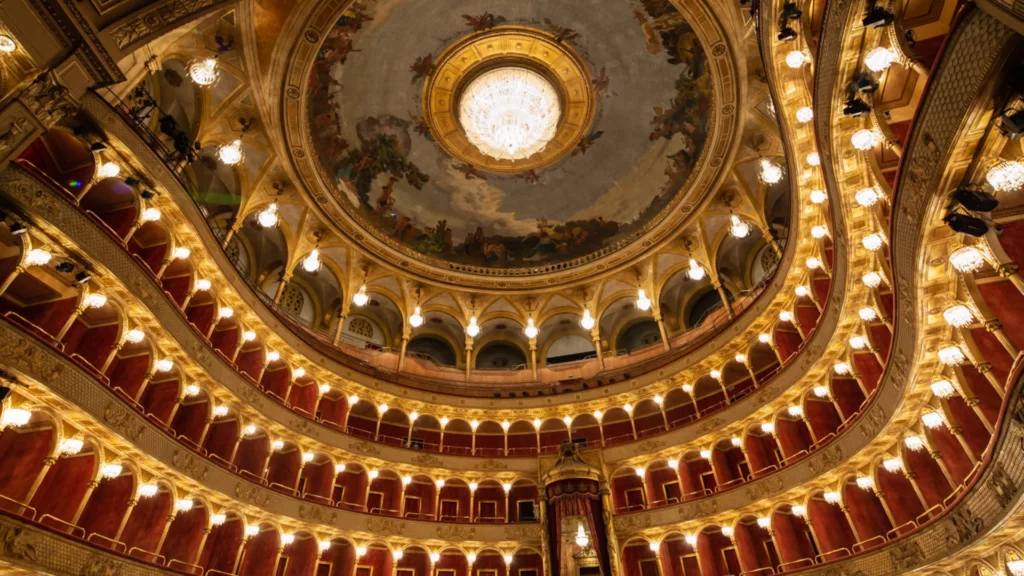
Experience the magic of Italian opera by spending an unforgettable night at the Teatro dell’Opera di Roma. Opened in 1880, this esteemed opera house boasts an impressive line-up of performances each year, captivating audiences with its phenomenal acoustics and spectacular productions.
Designed by Milanese architect Achille Sfondrini, the opera house exhibits an elegance that perfectly complements the grandeur of the performances held within its walls. From its red and gold interiors to its plush seats and sparkling chandeliers, the Teatro dell’Opera di Roma is a visual feast. But it’s the exceptional acoustics that truly sets this venue apart, allowing every note to fill the room with resonating clarity.
The opera house presents a rich program of operas, ballets, and concerts, showcasing works from the classic repertoire to contemporary pieces. It is not uncommon to witness world-renowned conductors, singers, and dancers grace the stage, making every night at the opera a special event.
Voyagix Tips
Here are some tips to make your evening at Teatro dell’Opera di Roma unforgettable:
- Book Tickets in Advance: Performances can sell out quickly, especially for popular operas. Check the opera house’s official website to view the schedule and book tickets.
- Dress Code: Although there is no official dress code, attendees often dress smartly. It’s part of the experience to dress up a bit for a night at the opera.
- Arrive Early: Aim to arrive 30 minutes before the performance to find your seat and enjoy the atmosphere.
Whether you’re a seasoned opera aficionado or a first-time attendee, a night at the Teatro dell’Opera di Roma is a quintessential Rome experience. The combination of spectacular performances, beautiful surroundings, and superior acoustics creates an enchanting evening that will linger in your memories long after the final curtain falls.
19. Visit the Palazzo Doria Pamphilj
Step into an artistic wonderland at the Palazzo Doria Pamphilj, a stunning privately owned palace turned museum that houses an extensive collection of art. Located in the heart of Rome, this opulent 17th-century palace is a hidden gem, often overlooked by visitors. Yet, the art treasures it holds are sure to take your breath away.
The collection, built over several centuries by the Doria Pamphilj family, features works by masters such as Caravaggio, Raphael, Titian, Velázquez, and Bernini. One of the highlights is Velázquez’s portrait of Pope Innocent X, considered one of the finest portraits in art history. As you move from room to room, you’ll be amazed by the sheer number and variety of artworks on display.
But the art isn’t the only thing that will impress you. The palace itself, with its gilded halls, frescoed ceilings, and lavish decor, is a masterpiece. Every detail, from the elaborate chandeliers to the intricate floor patterns, reflects the family’s immense wealth and refined taste.
Voyagix Tips
For an enriching visit to the Palazzo Doria Pamphilj, consider these tips:
- Take an Audio Tour: The museum offers an excellent audio guide, narrated by a member of the Doria Pamphilj family. This personal touch adds depth to the experience and provides insights into the family’s history and their art collection.
- Visit the Private Apartments: Be sure to check out the private living quarters, usually open to the public, to get a glimpse of how the noble family lived.
- Check the Official Website: For more information on hours and ticket prices, visit the official website of the palace.
Discovering the Palazzo Doria Pamphilj is like embarking on a thrilling treasure hunt, with artistic gems waiting to be found at every corner. It’s a journey through art and history that offers a glimpse into the opulent lives of Roman nobility.
20. Sample Gelato at Piazza Navona
Delight in the flavors of Rome as you enjoy a scoop of world-class gelato while exploring the breathtaking baroque splendor of Piazza Navona. This beautiful open space, famed for its elegant fountains and lively atmosphere, was built on the site of the Stadium of Domitian and still retains the form of the open space of the stadium.
Piazza Navona is a spectacle of Roman Baroque architecture. Three impressive fountains, the most famous being Bernini’s Fountain of the Four Rivers, are its focal points. The fountain features four river gods, representing the Nile, the Danube, the Ganges, and the Rio de la Plata, each indicating the parts of the world known to the Romans.
As you explore this baroque masterpiece, treat yourself to a scoop of Roman gelato. Rome is renowned for its gelato, with shops dotted across the city offering a wide variety of flavors. From classic stracciatella to unique combinations like basil and lemon, you’re sure to find something that satisfies your sweet tooth.
Voyagix Tips
Here are some tips for making the most of your time at Piazza Navona:
- Visit at Different Times: The piazza has a different atmosphere during the day and at night. Daytime is perfect for appreciating the architectural details, while the evening offers a more romantic setting.
- Gelato Shops: For the best gelato near Piazza Navona, try “Frigidarium” or “Gelateria del Teatro”. They’re both known for their high-quality, handmade gelato.
So, grab a scoop of your favorite gelato, stroll around Piazza Navona, and soak in the enchanting Roman atmosphere. It’s a simple pleasure that encapsulates the essence of Roman life.
21. Visit the Quartiere Coppedè
Enter the enchanting realm of Quartiere Coppedè, an oft-overlooked corner of Rome, where fairy-tale architecture comes to life. Tucked away in the Trieste district, this hidden gem designed by architect Gino Coppedè, is a captivating blend of styles, including Art Nouveau, medieval, Baroque, and even hints of ancient Greek influences.
The area is characterized by its unique and whimsical buildings that are adorned with intricate mosaics, elaborate wrought-iron works, and detailed carvings. While small in size, with just 18 buildings and 27 palaces and apartment buildings, Quartiere Coppedè makes up for its scale with its remarkable designs. One of the most notable buildings is the ‘Frog Fountain’ at the center of Piazza Mincio, the neighborhood’s main square, where it’s tradition for musicians to touch the frogs for good luck before a performance.
Take your time as you stroll through this architectural wonderland, letting your imagination run wild as you uncover the whimsical details that make Quartiere Coppedè such a delight to explore.
Voyagix Tips
For an enjoyable exploration of Quartiere Coppedè, keep these tips in mind:
- Take Your Time: There’s a lot to see in this small area, so slow down and take your time to appreciate the intricate details.
- Visit in the Morning or Late Afternoon: The soft light during these times brings a magical quality to the architecture.
- Bring Your Camera: The unique mix of architectural styles makes for great photos, whether you’re an amateur or a professional photographer.
Quartiere Coppedè is a whimsical architectural haven tucked away from the usual tourist trails. Exploring this charming neighborhood offers a wonderful opportunity to see a different side of Rome’s diverse architectural landscape.
22. Savor a Sunset at Pincio Terrace
End your day on a high note by catching the breathtaking sunset views over Rome from the Pincio Terrace. Perched atop the Pincian Hill, this panoramic terrace offers unmatched vistas of Rome’s skyline, with St. Peter’s Basilica, the Vittoriano monument, and much more on display.
As the sun begins to descend, the Eternal City is bathed in a warm, golden light that highlights the ancient structures and imbues them with a magical aura. It’s a spectacle you don’t want to miss. The terrace is a part of the Villa Borghese gardens, so take the opportunity to stroll around the beautiful surroundings before you settle in for the sunset.
Pincio Terrace is not as crowded as other popular viewpoints like the Spanish Steps or the Palatine Hill, so you can enjoy the enchanting sunset in a relatively peaceful atmosphere. The views from Pincio are genuinely heart-stopping and are among Rome’s best-kept secrets.
Voyagix Tips
For the best experience at Pincio Terrace, consider these tips:
- Time Your Visit: Try to arrive an hour before sunset to secure a good spot and enjoy the changing colors of the sky.
- Pack a Picnic: Bring some snacks and drinks to enjoy a picnic as the sun goes down.
- Wear Comfortable Shoes: The climb to the terrace can be steep, so wear comfortable footwear.
Catching a Roman sunset from Pincio Terrace is an experience that will undoubtedly leave an indelible mark on your memories of Rome. It’s the perfect way to end a day of sightseeing and start an evening of la dolce vita.
23. Explore the Non-Catholic Cemetery
Seek tranquility at the serene Non-Catholic Cemetery of Rome, also known as the Protestant Cemetery or Cimitero degli Inglesi. Located in the Testaccio neighborhood, this peaceful sanctuary serves as the final resting place for many notable figures, including the celebrated poets John Keats and Percy Bysshe Shelley.
As you stroll through the beautifully landscaped grounds, admire the poignant and artistic tombstones set amidst cypress trees and blooming flowers. The cemetery, though somber, is known for its tranquil beauty and the historical significance of those interred here. Keats’ grave, famously inscribed with ‘Here lies One Whose Name was writ in Water,’ is a particular point of interest for literature enthusiasts.
The cemetery is also home to the iconic Pyramid of Cestius, an ancient Roman tomb built between 18 and 12 BC, and a testament to the city’s deep historical roots. Besides its striking architecture and solemn tranquility, the cemetery offers stunning views of the Aurelian walls and the adjacent pyramid.
Voyagix Tips
To enhance your visit to the Non-Catholic Cemetery, keep the following tips in mind:
- Respect the Silence: Remember, it’s a functioning cemetery. Please maintain the serene atmosphere.
- Time Your Visit: The cemetery is typically less crowded during weekdays. Early morning or late afternoon visits offer softer light, ideal for photographs.
- Check the Official Website: For up-to-date information on opening hours and events check the official website.
The Non-Catholic Cemetery offers a serene and contemplative experience, a step away from the bustling city. Its historical significance and peaceful ambiance make it a uniquely poignant and fascinating place to visit in Rome.
Conclusion
The allure of Rome lies not just in its iconic landmarks that have stood the test of time, but also in its hidden corners, where the city’s heart truly beats. Each narrow street, hidden piazza, and ancient ruin tells a story of a time long past, yet living vibrantly in the city’s fabric. Every experience, whether it’s your first glimpse of the majestic Colosseum, your gastronomic journey in Testaccio, or your tranquil escape to Villa Borghese, is a thread woven into your personal Roman tapestry.
But, the beauty of Rome is that no two visits are ever the same. The city is an ever-changing canvas that continues to evolve while remaining rooted in its illustrious past. It’s a city that compels you to return, to discover another layer, another story, another hidden gem. Whether you’re a first-time visitor or returning for the umpteenth time, this list of 23 things to do in Rome offers a starting point to your adventure.
So pack your bags, wear your most comfortable shoes, and brace yourself to be swept off your feet by Rome’s ceaseless charm. Each journey is an adventure of discovery, unearthing a new facet of the city’s allure. Let the spirit of Rome captivate your heart and inspire your wanderlust. Happy travels!

